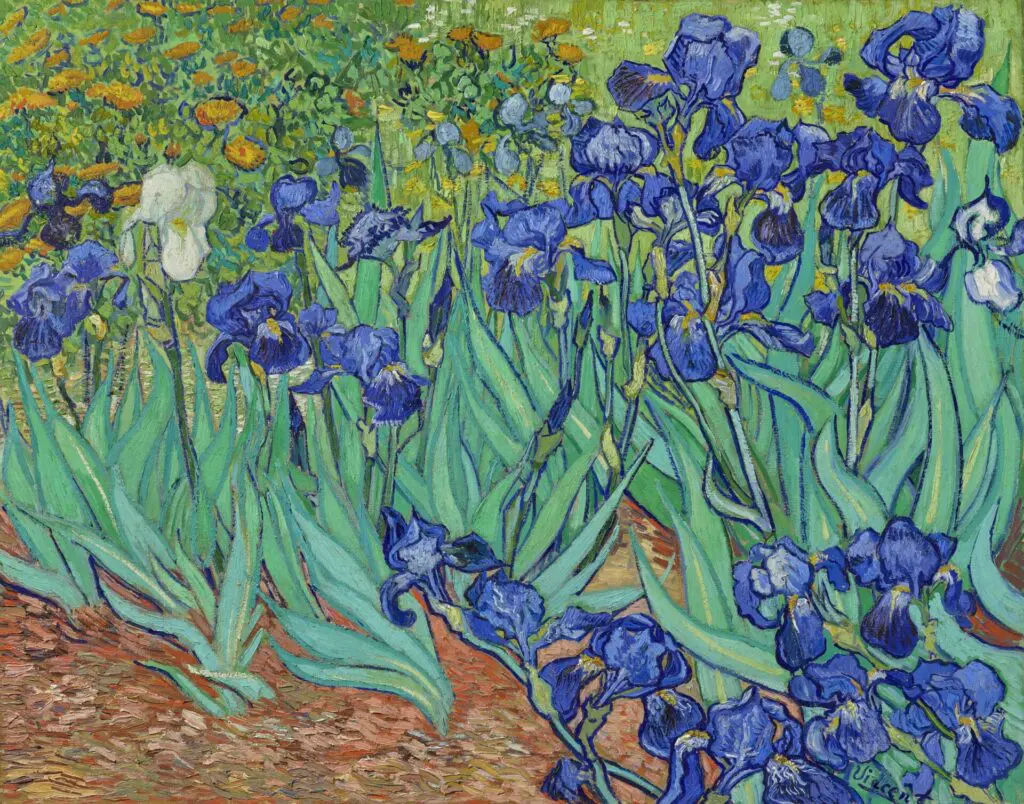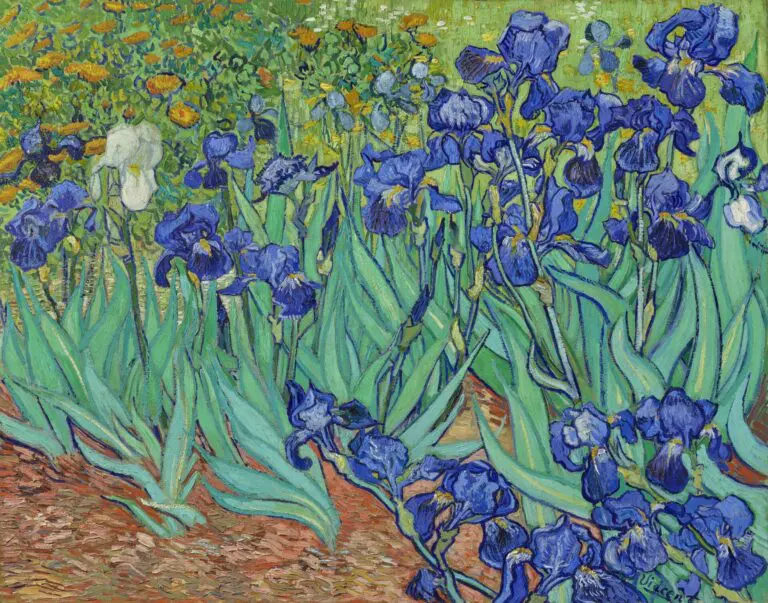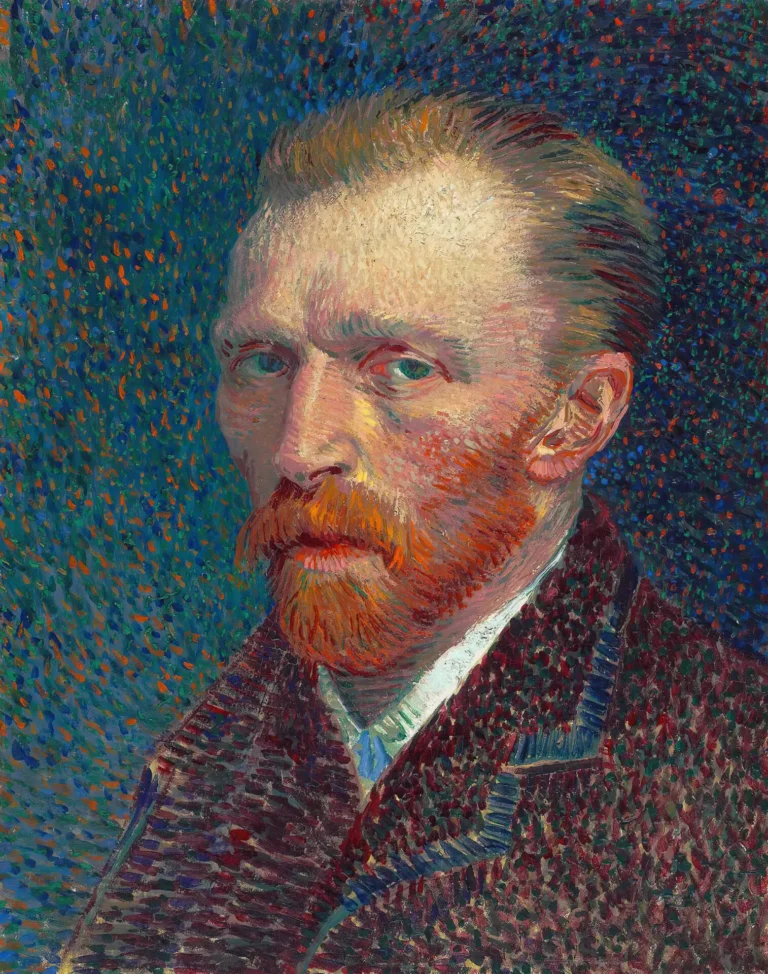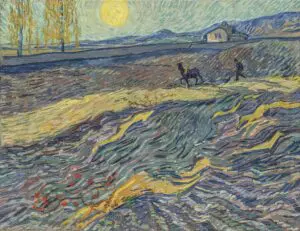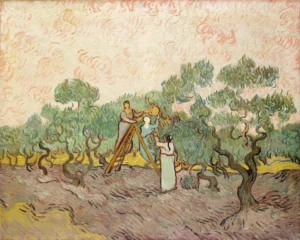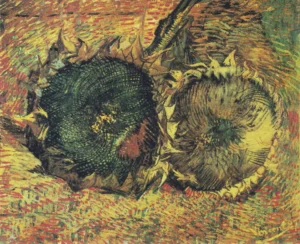Irises (1889)
Van Gogh’s Irises is a captivating and vibrant portrayal of blue-violet irises, painted with swirling brushstrokes that give each petal a sense of motion. This work is bursting with life, yet radiates calm—a contrast Van Gogh achieved through rich blues and greens, balanced with pops of yellow and red. The painting invites you into Van Gogh’s world, showing his fascination with nature and beauty, even during a challenging period of his life.
1889
About the Artwork
In 1889, Van Gogh created Irises shortly after entering the Saint-Paul-de-Mausole asylum in Saint-Rémy. The garden there became a source of solace for him, inspiring this first painting in his time at the institution. With expressive colors and lively details, Irises represents Van Gogh’s admiration for nature and gave him comfort during this turbulent period.
Did You Know
That’s the amount at which Irises was auctioned by Sotheby’s New York to Australian businessman Alan Bond in 1987. This price made Irises the most expensive artwork ever sold at auction up to that point. However, Bond later faced financial difficulties and couldn’t complete the payment. After the failed purchase, the J. Paul Getty Museum in Los Angeles acquired Irises privately. The museum has held it since 1990, where it remains on public display, attracting art enthusiasts from around the world.
Van Gogh himself didn’t think of Irises as a finished piece. He called it a “study,” intending to explore colors and forms. It’s amazing how a “study” became such an iconic piece, isn’t it?
Van Gogh’s brother, Theo, loved Irises so much that he submitted it to the annual Salon des Indépendants in 1889. It gained praise almost immediately, helping Van Gogh gain recognition during his lifetime. That support was crucial to him!




